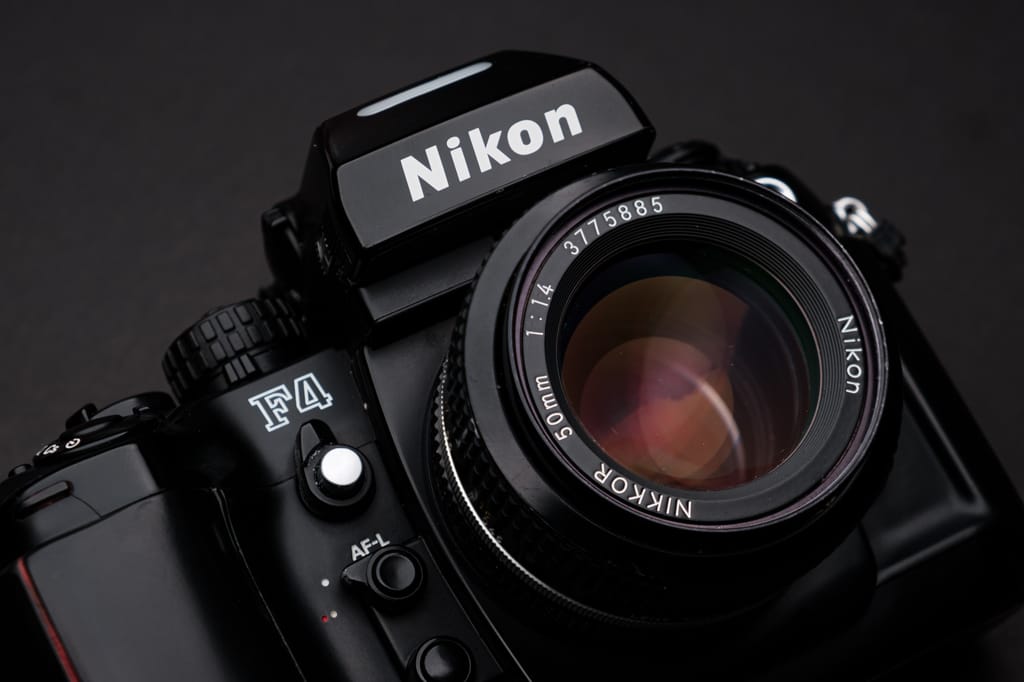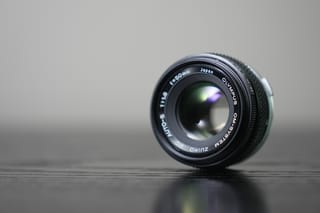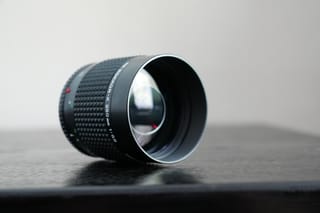
The Nikon F4 had been my “dream camera” since the early 1990s. Back in college, this camera was the end-all-be-all of modern technology, the pinnacle of camera design, and way out of the bounds of my strapped wallet. While most students my age had posters of the Lamborghini Diablo on their walls, mine were adorned with the Nikon F4. Sure, I went through many Nikon bodies over the years, the S3, FM, FM3HP, N60, D80, D700 (and the Nikonos V I should add) but never a proper pro-level body.
Last winter, I finally picked up a Nikon F4s. It was a long-time dream finally realized. For this review, I am mainly referring to the F4s version, but aside from the battery pack, the F4, F4s and F4e are identical cameras.
 For the review, I used a Nikkor 1.8/50 version D and shot everything on Kodak Portra 400.
For the review, I used a Nikkor 1.8/50 version D and shot everything on Kodak Portra 400.
NIKON F4 (S) TECH SPECS
The Nikon F4, F4s, and F4e were released in December of 1988 as a high-end replacement to the awesome F3. Starting at $2500 US (that’s $5,230 in 2018 dollars) it was firmly marketed to pro users. The F4s was the F4 with the MB-21 battery pack (standard in USA) which added 21mm to the height. The F4e was the monster – the F4 with the ginormous MB-23 pack – adding 39mm in height. See the image below for a compare on heights of the various models (image from Nikon). Oh, let’s not forget the Nikon NASA F4. That was the F4 with a monochrome 8 MP CCD digital back for use on the Space Shuttle in 1991.

The Nikon F4, F4s, F4e. Equipped with different battery packs, but the same great features.
- Type: AF SLR
- Shutter Speed: 30″ to 1/8800 plus B, T, and X
- Weight (F4s with MB-21): 1,280g (45.1 oz.)
- Dimensions (F4s with MB-21): 169mm x 139mm x 77mm (6.7 x 5.5 x 3.0 in.)
- Film: 35mm
- Film Speeds: ISO 6 to 6400 (25 to 5000 for DX)
- Picture Size: 24mm x 36mm
- Lens Mount: Nikon F mount (AF/MF)
- Exposure Control: M, Ph, P, A, S (AE-L)
- Autofocus: TTL phase difference detecting method
- Shutter: Electro-magnetically controlled vertical-travel focal plane shutter; shutter balancer incorporated
- Frames Per Second (F4s with MB-21): 5.7 with MB-21
- Mirror Lock-up
- Multi-Exposure
- Metering: EV 0 to EV 21 at ISO 100 (Matrix, Center-weighted, Spot)
- Exposure Comp: ±2 EV range in 1/3 EV steps
- Viewfinder: Nikon Multi-Meter Finder DP-20 Pentaprism
- Focusing Screen: B-type BriteView screen with central focus brackets (interchangeable)
- Grip: MB-21 (standard), MB-20, MB-23
- Power (F4s with MB-21): six AA-type alkaline or NiCd batteries
- Flash synchronization: 1/60 to 1/250 sec.
- Camera Back: Hinged back; interchangeable with Nikon Data Back MF-22, Multi-Control Back MF-23 or 250-Exp. Multi Control Back MF-24
NIKON F4S PERFORMANCE
This camera performs how a pro-body should and reminds me in many ways of my beloved Nikon D700. Smooth, fast and fairly quiet – especially for 30 year old technology. Well, quiet except for that awesome 80’s retro auto-frame advance when shooting. (Fire up Duran Duran’s “Girls on Film” and you’ll know what I mean.)
Walking with the camera, I found I could easily crank through a roll in no time. I think it was a mindset thing. Without a manual crank, the camera can fly through 36 exposures like no tomorrow whereas with a “crank” 35mm, I am much more conscious of each exposure advancement. As you well know, I usually have great difficulty in finishing off 36 shots without a little premature rewind.
Ergonomics
I like the layout of the knobs and levers on this body. The grips (vertical and horizontal) are comfortable in my hands and the placement of the shutter release is in a good spot. The shutter speed dial is large and rubber-nubbed to make it easy to find and spin while looking through the finder. The exposure compensation dial is in a nice visible dedicated spot as is the ISO dial. I like that the shooting mode, ISO dial, and vertical shutter release have levers to release them, so you don’t change shit on the fly.
AF-L and AE-L are both just within reach of a fingertip when holding the camera in landscape orientation. The finder is just fine with or without glasses for me.
Loading Film
I have to admit, this is the easiest film system I have ever loaded, aside from 110 film which was idiot-proof. Pop in the roll and drag the lead to the red line, then close the cover. That’s it. No spools to fumble with and it quickly advances to frame 1 when you close the door. Unloading is quick as well – just hold the two rewind levers down and it has the roll done in a few seconds. Granted, this was kind of standard thing for pro-level cameras (Canon EOS-1, etc.) of the time, so this isn’t something unique to the line. As much as I love the methodical full mechanical feel of old film cameras with their sometimes clumsy spools that refuse to accept the lead, I can get used to this 1980’s high tech goodness. For some, this is a plus, for others that like the clumsiness of the spool loading, perhaps a minus.
Focus
The Nikon F4 brought autofocus with focus-tracking to the game, though MF was also fully supported through the LCD in the finder with focus confirmation. The standard finder is the Nikon DP-20 which features classic center-weighted, spot, and matrix metering systems. The Nikon finder, as with the previous F systems, is interchangeable. Optional finders were the DA-20 (designed for action), 6x High Magnification DW-21, and the waist-level DW-20. Only the DP-20 offers matrix. All finders allow 100% field coverage.
The finder gives a full readout of settings on the LCD internal screen before you release the shutter, as seen to the right. I find this really handy when shooting G glass, as there is no aperture ring and you’re forced into shutter priority. I can adjust shutter speed with the dial and see the current f-stop being selected on the readout here. Piece of cake with the D version.
Shooting
The Nikon F4 was the first Nikon F-series to remove the manual film advance lever. They opted for the motor-driven system which also operates the rewind (though you can still rewind manual if you wish to preserve battery reserve). So, with the motor system, you fire away and it automatically advances to the next frame. I do have to say that the shutter release seems to be a bit of a hair-trigger and has various shutter modes from single (S) to the array of continuous modes (Ch, Cl or Cs). Note: The red L on that dial is power off / lock.
Double-exposure is still attained by a tiny lever behind the exposure comp dial. If you pull it back before an exposure, the camera will not advance to the next frame after depressing the shutter release.
The shooting modes are manual (M), aperture priority (A), shutter priority (S), and program (P and P+). A dedicated exposure compensation dial sits on this same wheel.
Shutter speeds are 4″ to a blistering 1/8000 on the dial – though it can perform 30″ to 1/8000 with the proper settings. And I say blistering as most of my cameras max out at 1/500 – so it’s a relative thing. Then you get the various other modes I rarely use: B, T, and X.
Build
A hefty camera, the Nikon F4 was built with an aluminum-alloy body casing, heavy-duty electronics, a rubber-cushioned exterior (better water resistance than previous pro-bodies) and the F-mount giving it the continued ability to work with every Nikon lens made (AF+MF) aside from a handful of early fisheye MF pieces. This was also one of the few Nikon film cameras that allowed full matrix-metering with AI manual lenses. Note: though the G lenses will work with this, you are limited to shutter and program modes as the G lenses (sadly) lack an aperture ring. But in shutter mode, you can easily adjust the speed to get the f-stop you desire. This is why I used the D lens for this review (full manual ability).
Placing it in your hands, you know you’re holding a pro-level body, but have to say I like the all-metal bodies of older generations a bit more. They feel more “crafted” if you will.
One of the best features of this camera was the (last in the line) use of mechanical buttons, dials, and levers rather than digital buttons and menus. This is the main thing that drove me to the F4 over the F100/F5/F6 styles. I really like the look, feel, and control of these older analog systems.
Image Quality
This is one of those “let the images speak for themselves” kind of things, so here you go.

CONCLUSIONS
Have to say this has been a really fun camera to play with. Even at 30 years old, it keeps up with the modern big boys of film. I’ve been really happy with the use and quality of this camera, and it did not let down my dreams at all.






